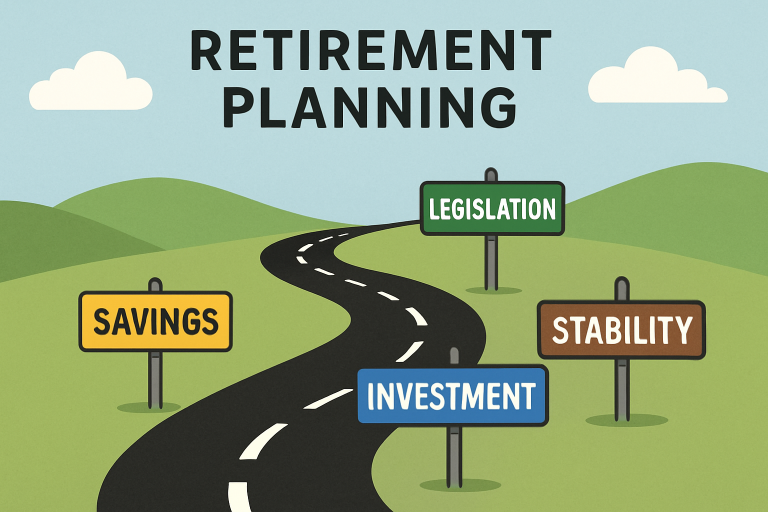Key Takeaways
- Understanding various retirement planning options is crucial for financial security.
- Recent legislative changes, such as the SECURE 2.0 Act, offer new opportunities for savers.
- Personalized strategies can help navigate market volatility and ensure a comfortable retirement.
Introduction
Preparing for retirement is a significant financial milestone that requires thoughtful planning and ongoing evaluation of one’s strategies. The ever-evolving landscape of retirement legislation and shifting economic conditions makes it essential to stay informed and adaptable. Reliable, up-to-date guidance, such as the resources provided by Retire PR, can help individuals make informed decisions that pave the way for a secure and comfortable future.
Committing to a retirement plan early and updating it frequently is crucial, particularly as regulations and savings vehicles change. Staying abreast of opportunities and new national policies can help individuals secure a more predictable and stress-free retirement.
Understanding the SECURE 2.0 Act
The SECURE 2.0 Act, passed in December 2022, marks a significant advancement in U.S. retirement policy, aiming to boost Americans’ savings and financial resilience. Several pivotal changes came with this legislation:
- Required Minimum Distributions (RMDs): The age threshold for mandatory withdrawals from qualified retirement plans has shifted from 72 to 73 as of 2023, and will rise to 75 in the coming years. This adjustment allows more time for accounts to grow and reduces the pressure on those who are not yet ready to start tapping into their savings.
- 401(k) Provisions: Beginning in 2025, most employers will be required to automatically enroll eligible employees in 401(k) plans, although some exceptions apply. Additionally, the act includes a provision for penalty-free withdrawals up to $1,000 per year for emergency expenses.
- Catch-Up Contributions: For individuals aged 60–63, there is an increased contribution limit—up to $10,000 more annually—starting in 2025, which will be adjusted for inflation. This can be a key option for those seeking to catch up on lost time closer to retirement.
These reforms are designed to reflect the realities of today’s workforce and create more flexible and accessible ways to save for retirement.

Addressing the Retirement Crisis Among Younger Generations
Many Gen Z and younger Millennials are facing unprecedented hurdles in retirement savings, from high living costs and housing prices to the limited benefits associated with gig work or contract jobs. These groups often lack access to employer-sponsored plans, which have historically been a primary path to retirement security.
It’s increasingly essential that retirement planning resources and tools are accessible even to workers without formal pension coverage. Companies and policymakers are evaluating simplified retirement vehicles and portable plan options that follow workers across jobs, reducing friction in the savings process. As the workforce evolves, such innovative measures are key to addressing the looming savings gap among younger generations.
Strategies for Achieving a Secure Retirement
Implementing a combination of established and modern strategies can optimize retirement outcomes. Individuals should consider the following core steps:
- Start Early: Building retirement savings over time harnesses the power of compound interest, allowing even modest monthly contributions to grow significantly.
- Maximize Contributions: Make full use of employer-provided retirement matches or profit-sharing, which can accelerate savings growth.
- Diversify Investments: Employ a mix of stocks, bonds, and other assets to spread risk and increase long-term growth potential.
- Plan for Healthcare Costs: Forecasting expected healthcare expenses in retirement is crucial; Health Savings Accounts (HSAs) and long-term care insurance are strategies worth exploring.
By systematically applying these strategies, anyone can strengthen their financial position for retirement and be better prepared for the uncertainties ahead. According to a Kiplinger guide on thoughtful retirement planning, consistently reviewing and adjusting your plan is essential to respond to economic shifts and changing personal priorities. Regularly consulting with a financial advisor can help identify overlooked opportunities and potential risks. Additionally, staying informed about tax laws and investment trends ensures your retirement plan remains both efficient and adaptable.
Personalized Retirement Strategies
Given recent market volatility and lingering economic uncertainty, personalizing retirement planning is more critical than ever. Each individual’s circumstances—health, lifestyle, family obligations, and income needs—are unique. Practical retirement approaches should include a thorough review of income sources, optimized Social Security benefit strategies, and an evaluation of whether products like annuities could be suitable.
Financial advisors can provide objective analysis and help tailor a plan to align with specific goals. Such expertise can help retirees navigate inflation and market fluctuations, ensuring peace of mind and long-term financial stability.
Innovative Approaches to Retirement Savings
Technological and financial innovations are opening up new opportunities for retirement planners. One emerging area is decentralized annuities, which can deliver stable income and broaden access to secure benefits regardless of a single employer’s plans. Additionally, the use of advanced risk analysis tools in pension fund management enables more adaptive and dynamic investment strategies that account for market fluctuations over time.
These new tools and products can complement traditional retirement vehicles and play a pivotal role in building more flexible and resilient retirement portfolios for the next generation of retirees.
Conclusion
Retirement planning is more crucial and complex than ever. Legislative updates, such as the SECURE 2.0 Act, emerging risks for younger workers, evolving strategies, and innovative savings products, all influence today’s retirement landscape. By starting early, maximizing contributions, diversifying assets, and staying informed about legislative reforms, individuals can carve a secure path toward their retirement dreams. Proactive planning and a willingness to adapt are key components to thriving in the golden years.
